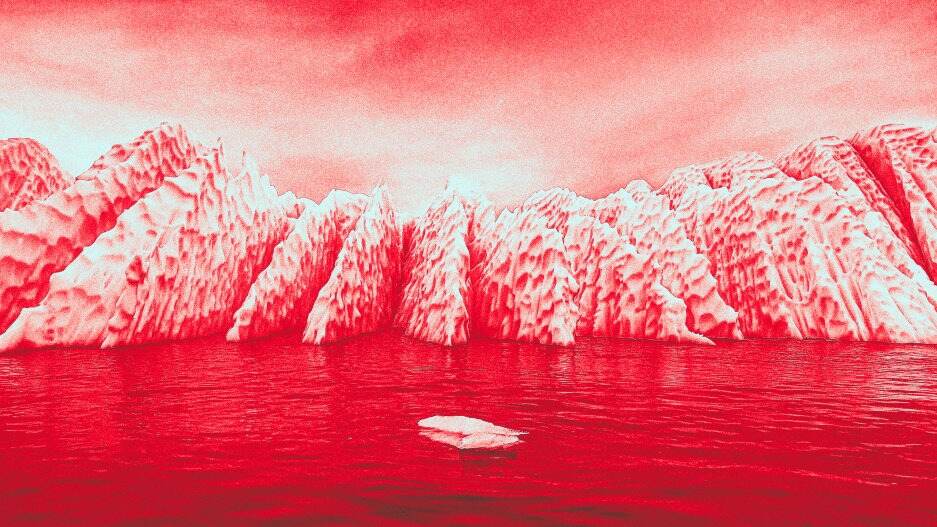- | 9:00 am
Scientists say the clock is ticking after unexpected findings at Antarctica’s ‘doomsday glacier’
If it collapses, it could bring about a catastrophic rise in sea levels.

Far away in West Antarctica floats an 80-mile-long chunk of ice the size of Florida, called the Thwaites Glacier. It’s also known as the “doomsday glacier,” because if it were to collapse, it could bring about a catastrophic rise in sea levels.
Now, new research has shown that this doomsday glacier could be teetering on the edge as our planet warms relentlessly.
In two papers published in Nature journal on Wednesday, scientists report that warm water has been creeping into the glacier’s cracks and crevices, weakening its structural integrity as the glacier thins, and threatening its position as a natural dam between the ocean and the Thwaites’ formidable neighboring swaths of ice. If the Thwaites were to disintegrate, scientists estimate it could raise sea levels by more than two feet—enough to submerge parts of coastal cities worldwide, from Tokyo to Dubai to Miami.
But if ice surrounding the Thwaites were to fall as well, in a sort of domino effect, it could raise sea levels by another devastating 10 feet.
It’s the deepest understanding yet of how the ocean is swirling beneath one of the planet’s biggest bellwethers of climate change. Glacier behavior is usually observed from above with satellite technology, but starting in late 2019, a team of U.S. and British researchers from the International Thwaites Glacier Collaboration used a hot water drill to forge a hole nearly 2,000 feet deep into the ice, then sent down a cascade of aquatic robots to swim below the underbelly of the so-called ice shelf—a critical self-fortifying feature of the Thwaites that juts out across the ocean’s surface.
One of the robots, a torpedo-like drone dubbed the Icefin, spied giant crevasses in the ice shelf that were being hollowed out by warm water. In other places, the ice was being eroded away at different angles by the rush of ocean, forming staircase-shaped “terraces.” All of it has been contributing to a fractured, shrinking glacier that scientists warn is now more fragile than ever.
In the ruthless march of global warming, the Thwaites Glacier has been a sort of canary in the coal mine. And while the research team also discovered that the Thwaites was melting at a slower pace than previously thought, it’s not quite good news: Rather, the finding is simply that the glacier’s retreat—which has lost 9 miles of ice since the late 1990s—comes not just from melting, but from shattering as well. Some analysts believe we may still have hundreds to thousands of years before the Thwaites’ complete demise, but others predict it could be as near as 5 years.
THE FUTURE IS NOW
Aside from human disruption, rising sea levels and warming poles are already beginning to devastate arctic and antarctic wildlife like penguins and polar bears, who hunt on floating chunks of ice and have gone hungry with less ground for finding food.
But in a rare bright spot, beleaguered scientists described one uplifting surprise: 2,000 feet below the Thwaites’ icy thaw, the Icefin also captured a colorful flash of sea anemones, swimming along in what must be one of Earth’s most unforgiving climates.
“We were so tired that you kind of wonder like, Am I really seeing what I’m seeing?” Britney Schmidt, a polar scientist at Cornell University, told CBS. “In the background were like all these sparkling stars that were like rocks and sediment and things that were picked up from the glacier, and then the anemones. . . . To accidentally find them here in this environment was really, really cool.”






































